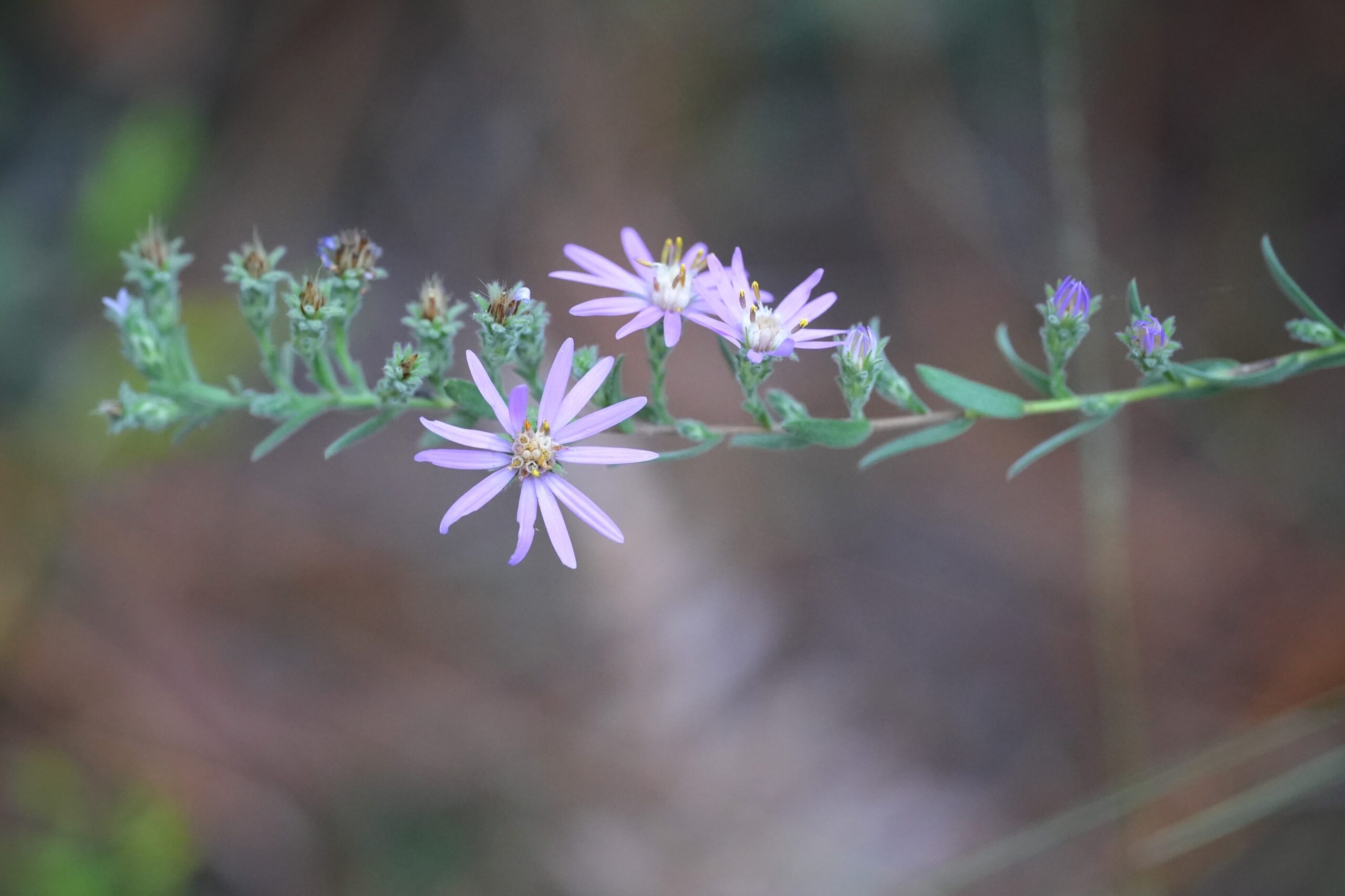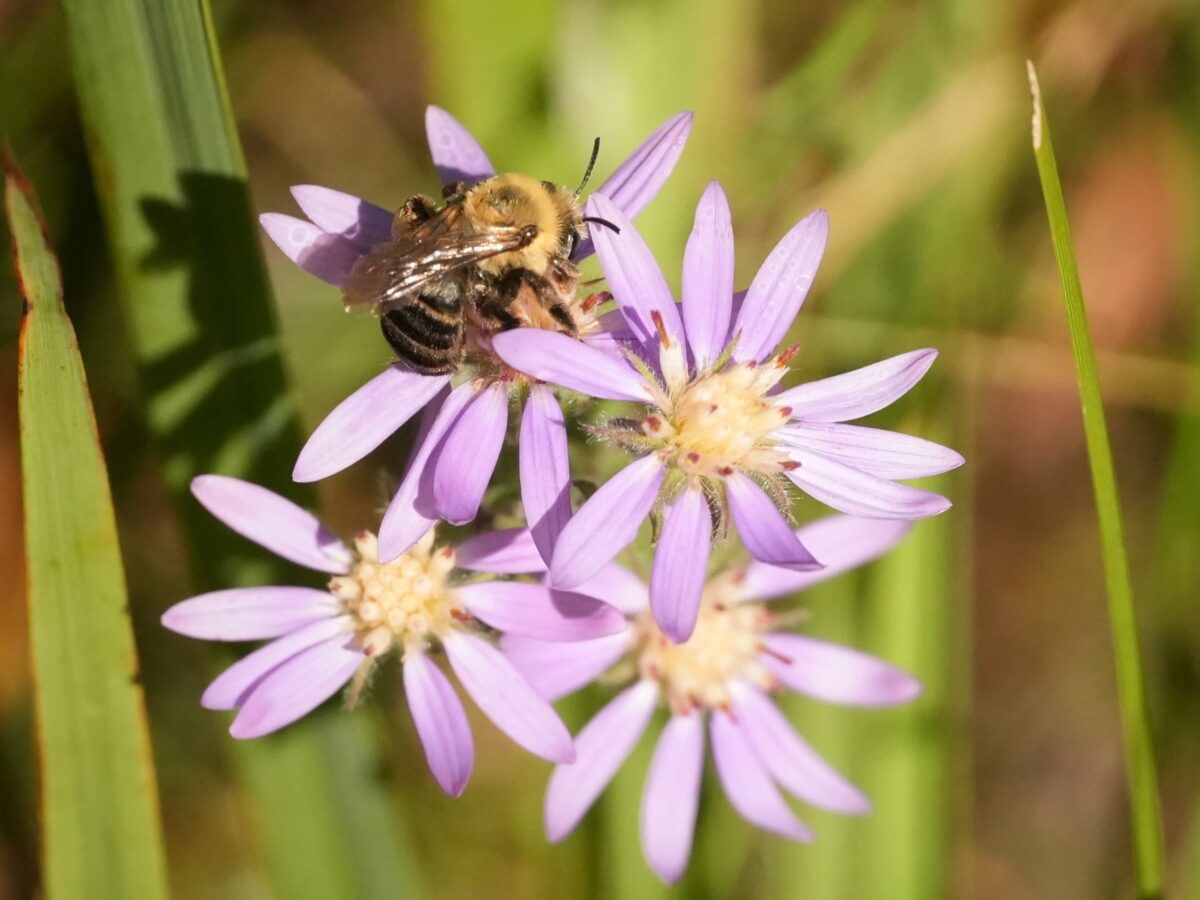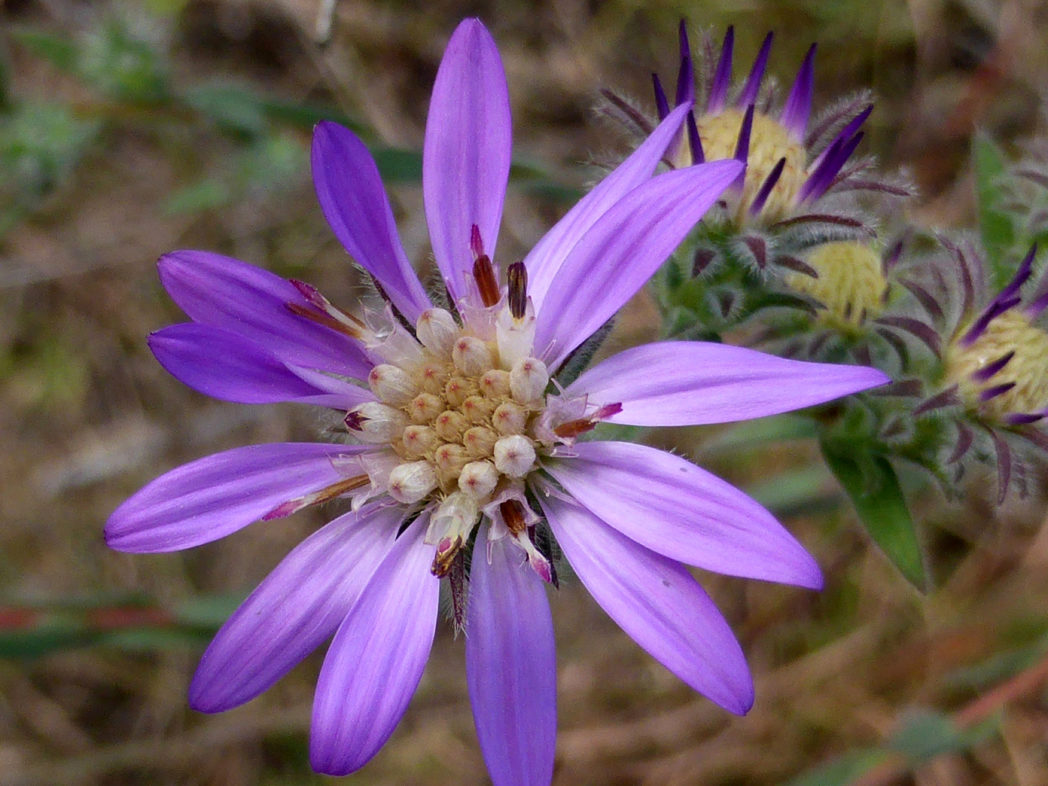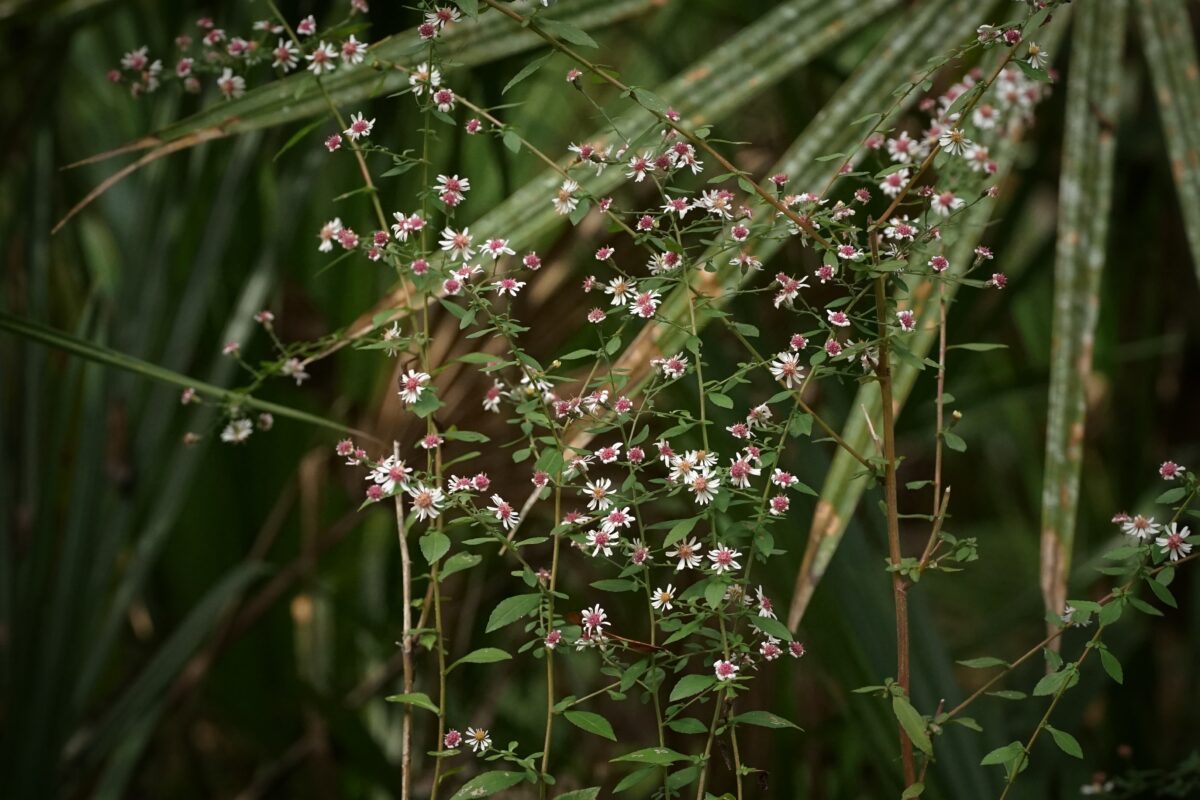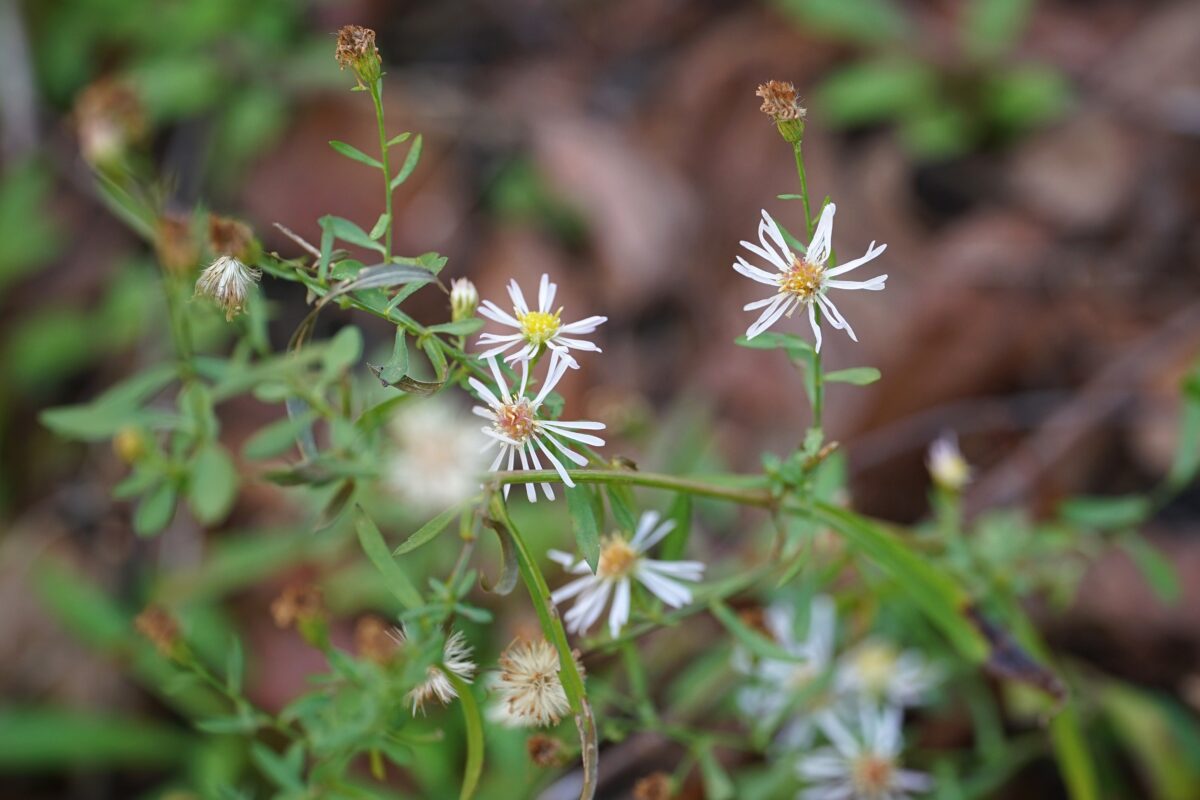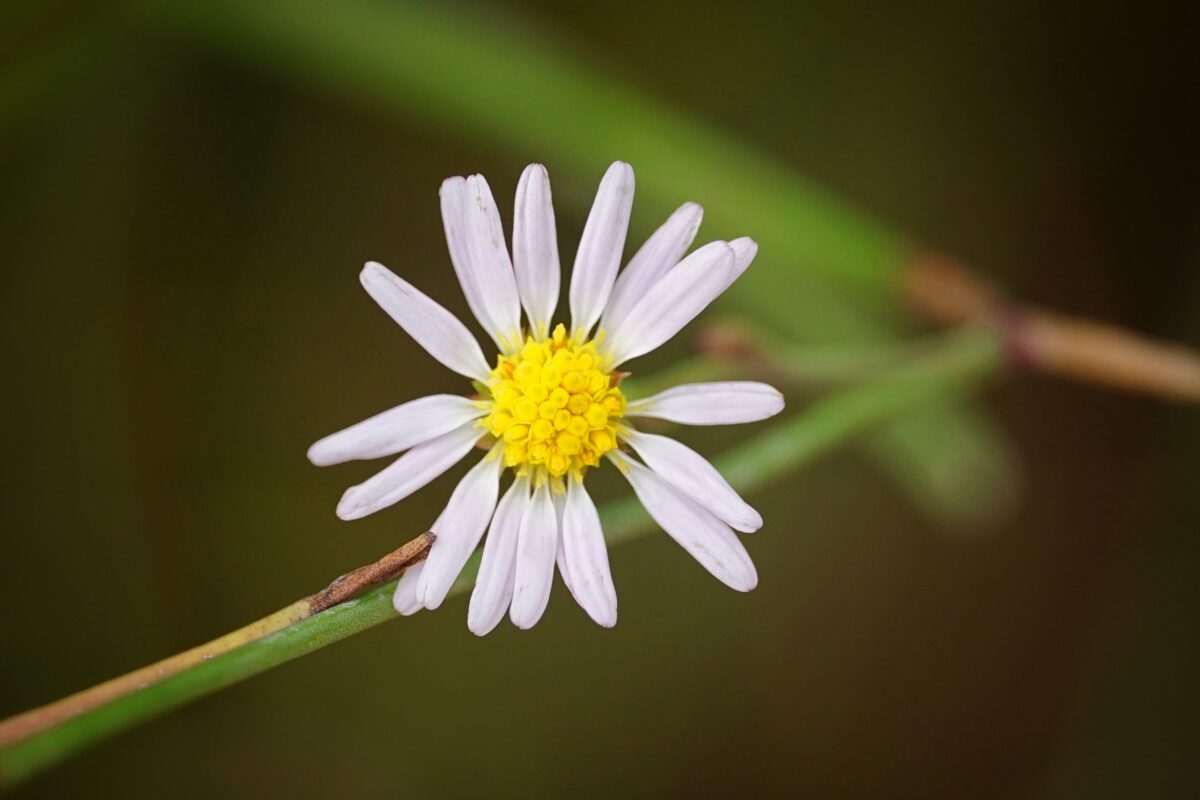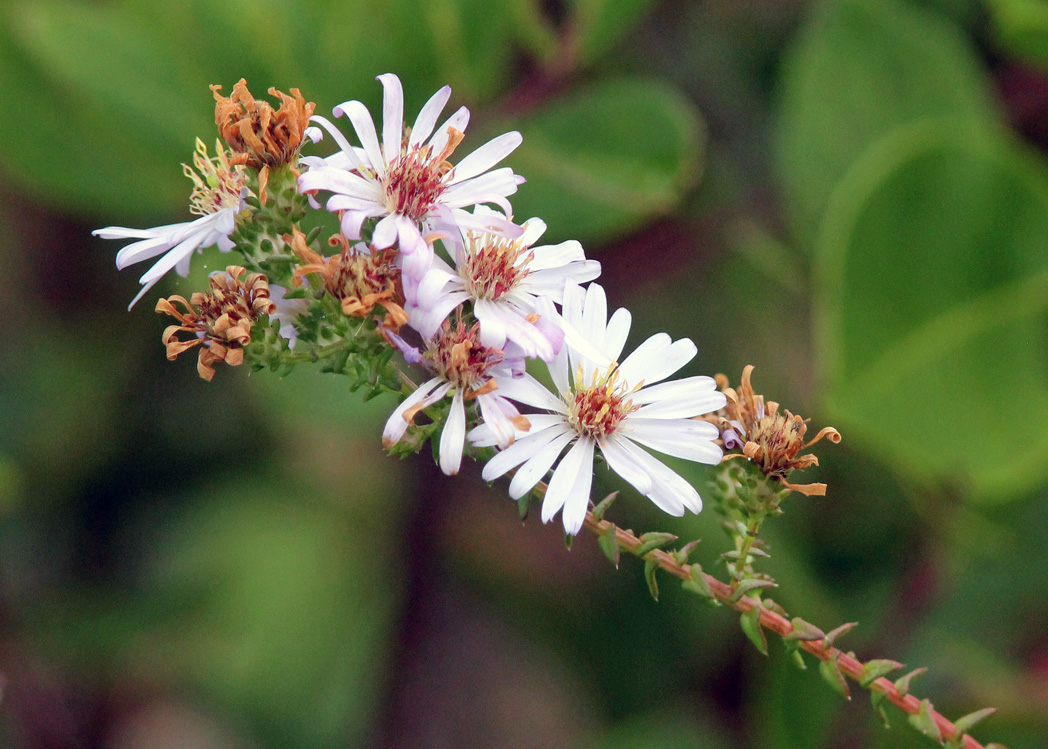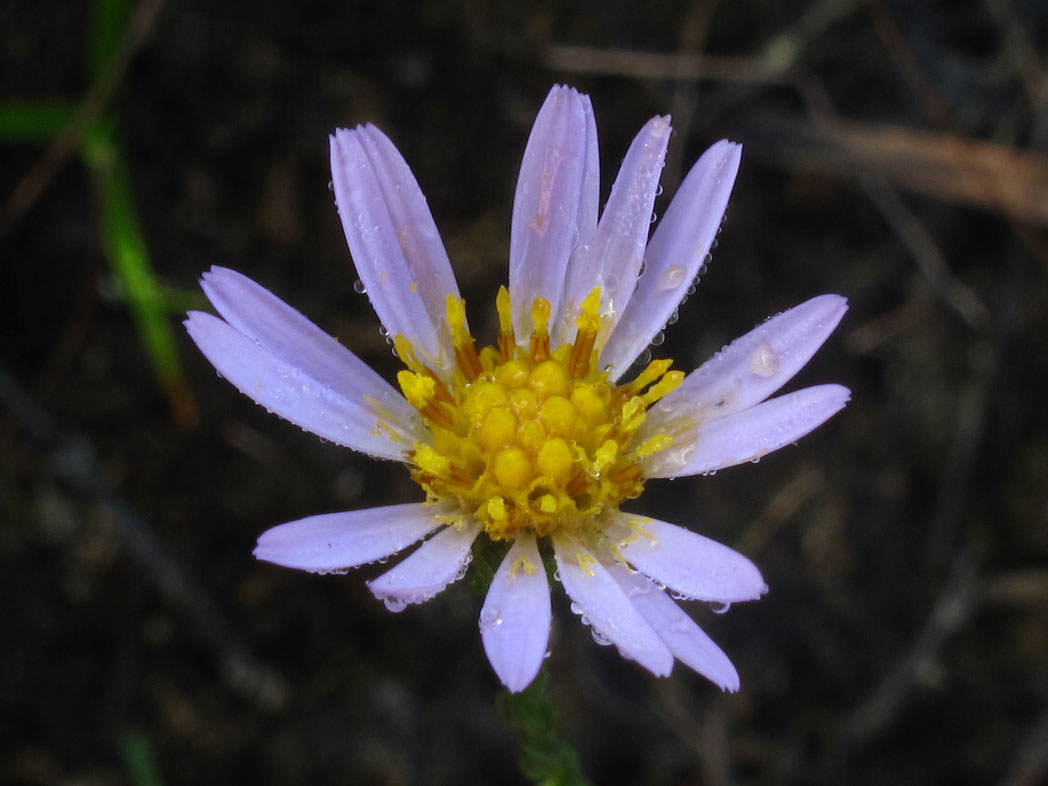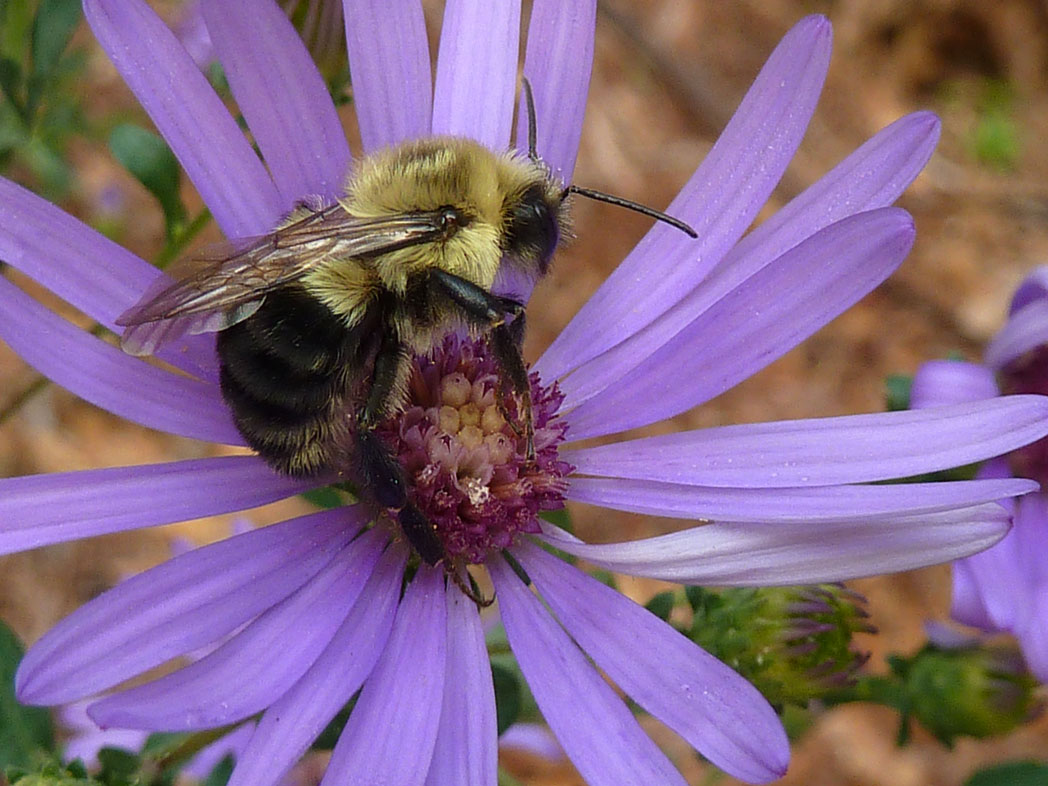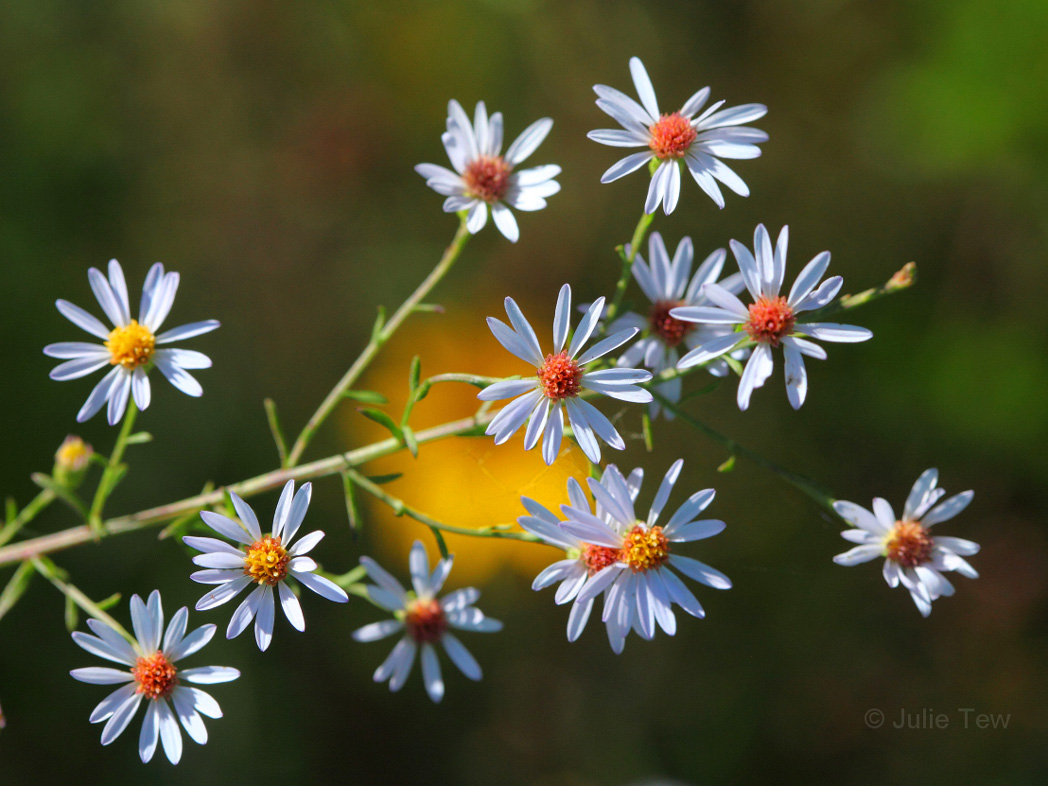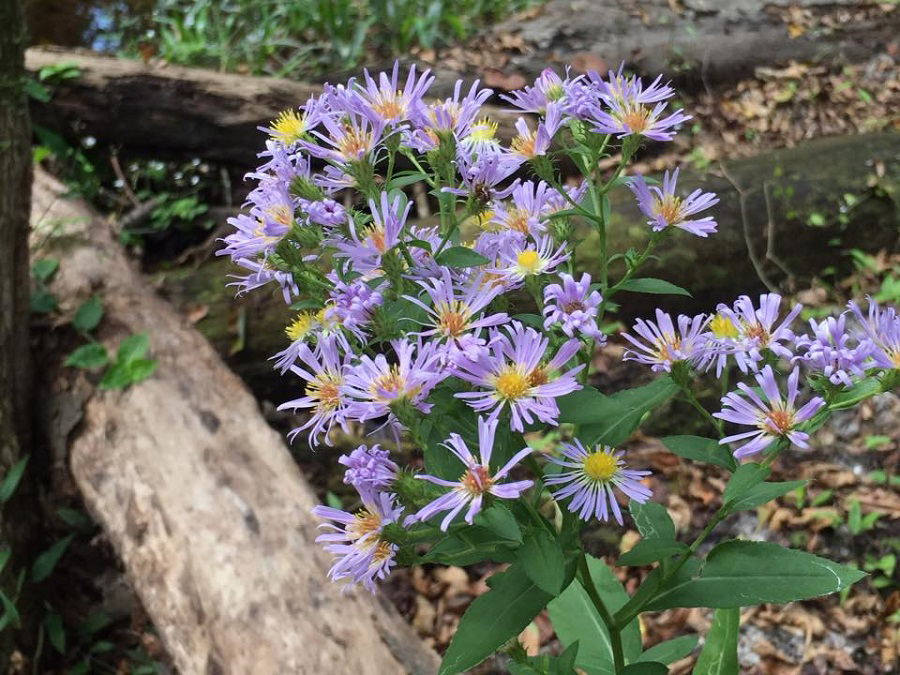Eastern silver aster
Pictured above: Eastern silver aster (Symphyotrichum concolor). Photo by Emily Bell. Click on terms for botanical definitions. View post as a PDF.
Eastern silver aster (Symphyotrichum concolor) is a winsome wildflower found in Florida’s pineland habitats. It typically blooms in fall but may bloom in summer and early winter (or year-round in South Florida). Its many flowers provide nectar for a variety of butterflies.
Eastern silver aster’s flowers consist of lavender to bluish-purple ray florets surrounding a compact center of creamy white disk florets. Anthers are reddish-brown and extended. Leaves are linear and covered with a silky, silvery pubescence (hence its common name of “silver” aster). They are alternately arranged and slightly appressed. Bracts are pubescent with purplish uppers and green undersides. Fruit is an inconspicuous achene.
Members of the Symphyotrichum genus were once classified in the genus Aster, which contained over 600 species. All have since been reclassified into 10 different genera. The genus name Symphyotrichum is from the Greek sýmphysis, meaning “growing together,” and thríx, or “hair.” It refers to a basal ring of hairs or bristles (pappi) thought to occur on New England aster (Aster novi-belgii, now Symphyotrichum novi-belgii); however, this characteristic is absent in most modern Symphyotrichum species.
Family: Asteraceae (Aster, composite or daisy family)
Native range: Nearly throughout Florida with heavier concentration in Panhandle and north/north-central peninsula
To see where natural populations of Eastern silver aster have been vouchered, visit florida.plantatlas.usf.edu.
Life span: Perennial
Soil: Moist, well-drained sandy or calcareous soil
Exposure: Full sun to minimal shade
Growth habit: 1–3+’ tall
Propagation: Seed
Florida regions of landscape suitability: North, Central, South
Garden tips: Eastern silver aster is suitable for naturalistic landscapes and restorations. It should be planted with grasses and taller wildflowers to help support its stem. The plant grows in low-nutrient soils and is very drought tolerant.
Eastern silver aster plants are occasionally available from nurseries that specialize in Florida native plants. Visit www.PlantRealFlorida.org to find a nursery in your area.
Learn more about Eastern silver aster from the Florida Native Plant Society and the Institute for Regional Conservation.
For information on other Symphyotrichum species, see these resources:

